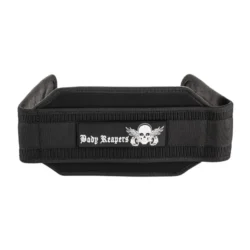When it comes to plastic part manufacturing, size and shape matter—especially if you’re working with large, flat components. Think about items like panels, trays, covers, housings, or structural sheets. These aren’t your everyday molded pieces. They require a specialized process known as injection molding large flat parts.
Unlike smaller or more compact parts, large flat parts are more prone to warping, uneven cooling, sink marks, and other molding defects. That’s why molding these components correctly takes the right blend of technical skill, equipment, and design knowledge.
Let’s break it all down—from common applications to manufacturing challenges and how to choose the right partner.
What Are Large Flat Parts?
Large flat plastic parts are defined by their broad surface area and relatively thin profile. These parts typically require high-strength performance while maintaining dimensional accuracy and aesthetic quality.
Examples include:
- Automotive interior panels
- Plastic shelving or enclosures
- Electronic device covers
- Appliance panels
- Plastic trays used in packaging or logistics
Due to their size and shape, molding these parts comes with a unique set of engineering and production hurdles.
Key Challenges in Molding Large Flat Parts
1. Warping and Shrinkage
One of the biggest concerns is warping caused by uneven cooling. If different parts of the mold cool at different rates, the plastic can distort, especially with thin or wide surfaces.
2. Flow Length
Plastic has to travel a long way to fill the mold entirely. Without proper gating and venting, the material may not fill the corners, resulting in incomplete parts.
3. Surface Defects
Sink marks, flow lines, and weld lines are more visible on large surfaces and can compromise both the part’s appearance and integrity.
4. Tooling Costs
Larger molds are naturally more expensive to build, maintain, and run. That’s why efficiency and mold design play a critical role in controlling costs.
Applications of Large Flat Plastic Parts
Large flat parts are used in a variety of industries, including:
- Automotive: Door panels, underbody shields, and trunk liners
- Appliances: Refrigerator back panels, washer/dryer control covers
- Packaging: Custom trays and bins for industrial transport
- Electronics: Housing covers for large devices or machines
For high-performance vehicle components, check out how injection molding car parts uses similar techniques, especially for interior and exterior panels.
In the packaging world, manufacturers often turn to injection molding packaging solutions for large, lightweight, and reusable packaging components used in industrial logistics.
Solutions for Molding Success
Despite the challenges, molding large flat parts can be done successfully with the right tools and strategy. Here’s what works:
1. Advanced Mold Design
Careful attention to gate locations, wall thickness uniformity, and cooling channel layout can dramatically improve part quality. Large flat molds often require sequential valve gating to control material flow across long distances.
2. Precision Temperature Control
Advanced temperature regulation ensures even cooling and reduces the risk of warping.
3. Material Selection
Using the right plastic resin is critical. Materials with low shrink rates and high dimensional stability—like ABS, PC-ABS blends, or high-impact polystyrene—are ideal for flat parts.
4. Efficient Ejection Systems
To protect the part from bending or stress during release, solutions like injection molding part separators are used. These systems help ensure a clean, damage-free ejection every time.
Supporting Component Manufacturing
Many manufacturers producing large flat parts also make a wide variety of supporting components. For example:
- Injection molding plastic hardware parts like fasteners and clips are often used to install or support large panels.
- Injection molding hollow part manufacturers create ducting or housing components that may pair with large flat panels in an assembly.
- Cylindrical designs, such as pipe or conduit covers, are handled by injection molding cylindrical parts manufacturers.
Regional Manufacturing Capabilities
If you’re in Texas and looking for localized service with hands-on support, a reputable injection molding company in Fort Worth, TX might be a solid option. They can help with design consultation, prototyping, and full-scale production runs.
Alternatively, if you’re looking for molders that specialize in diverse product types, consider injection molding San Antonio, TX services. These companies often offer broader capabilities, including automotive, consumer, and industrial applications.
Beyond Automotive: Other Uses for Large Flat Parts
The versatility of large plastic panels means they’re not limited to cars or packaging. In the food sector, injection molding food products companies may use large trays or platters for handling and transport.
Flat panels can also serve as enclosures or covers for electronics and machinery, where appearance and durability matter.
Things to Consider When Choosing a Manufacturer
When you’re working with large parts, not every molder can handle the size and complexity. Here’s what to look for:
- Machine Size & Clamping Force – Ensure the manufacturer has presses large enough for your mold size.
- Tooling Expertise – Experience with mold flow simulation and cooling optimization is key.
- Material Capabilities – Especially important if your parts need high performance, flame retardance, or UV resistance.
- Quality Systems – Look for ISO certifications and in-house inspection tools.
Final Thoughts
Creating large flat plastic parts is more complex than it may appear—but with the right combination of design, tooling, and process control, it’s absolutely achievable.
From automotive door panels to logistics trays and appliance housings, injection molding large flat parts continues to be a preferred manufacturing method for high-volume, high-precision applications.
Working with experienced molders who understand the intricacies of large-part production is the key to success. Whether you’re collaborating with a Fort Worth TX injection molding company or exploring options in San Antonio or beyond, make sure your partner has both the equipment and expertise to deliver strong, dimensionally accurate parts—every single time.
Ready to mold your next big idea? Get started with a manufacturer who knows how to handle big parts with even bigger expectations.




